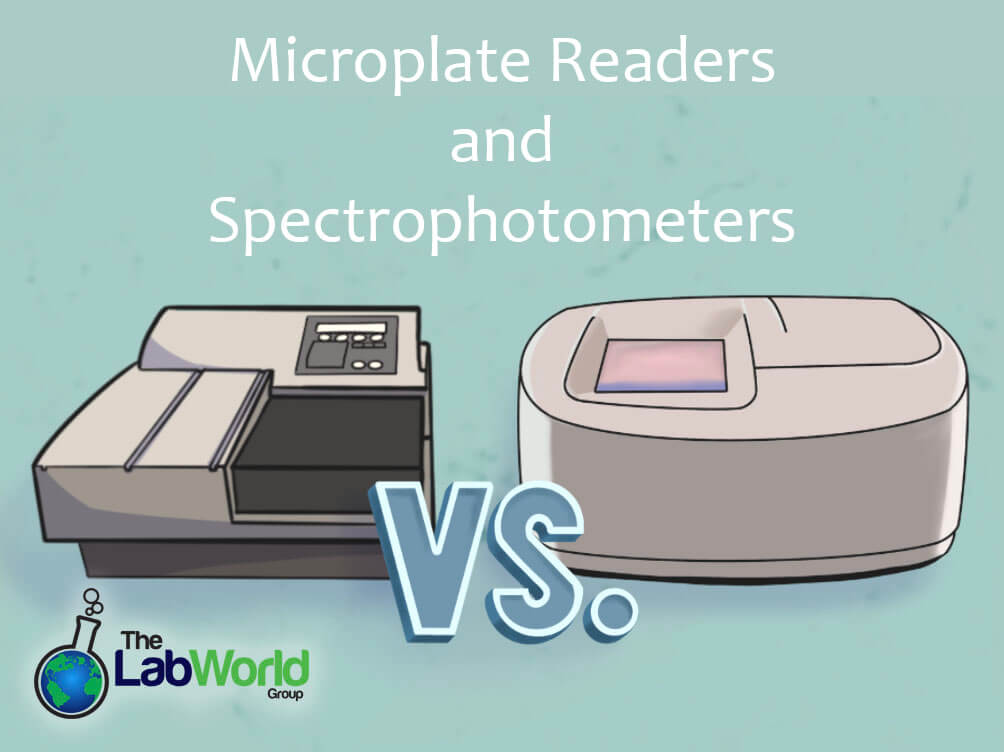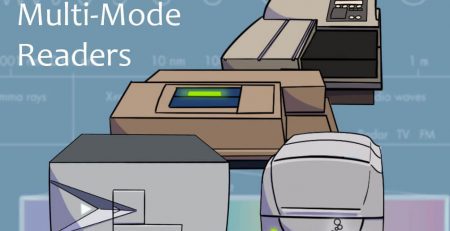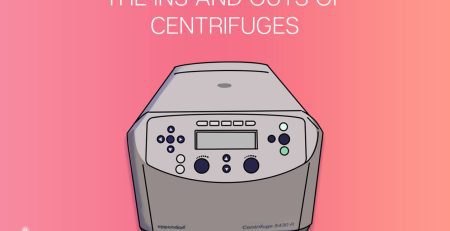
Microplate Reader VS Spectrophotometer: What’s the difference?
Amanda2021-08-16T13:21:31+00:00Microplate Readers, or Plate Readers, are a type of spectrophotometer. Both use either a monochromator system or filter-based optics and these lab instruments both collect useful measurements across a variety of methods.
Between the two instruments, however, some differences make each stand out from the other.
First off…
What is spectrophotometry?
Spectrophotometry is the measurement of how much light a chemical substance absorbs. This measurement is typically related to the concentration of a targeted molecule. The light can be any wavelength from UV to NIR achieved either with a monochromator or a filter-based selection method.
Spectrophotometry involves three main components, a light source such as Deuterium or Tungsten (sometimes both), optics that deliver and collect the light, and the detector. These instruments can also be either a single beam or a double beam for simultaneous measurements. Using a sample beam and a reference beam, a dual-beam system has the advantage of the time saved between gathering reference information and the actual measurement.
Sample Sizes: What throughput do you need?
The biggest difference between a microplate reader and a spectrophotometer is sample size.
A typical spectrophotometer like the Thermo Nanodrop works with samples held in a cuvette, measuring just 1-2 uL at a time. This allows for very precise reading and high dynamic ranges. These can also be cost-effective as they’re a single purpose and have fewer components. The disadvantage is this could limit your scope and take more time in the long run, holding back initial research potential.
A plate reader on the other hand works with multiwell plates to cover more ground in less time. With counts from 96 to 384 wells, some microplate readers can handle as high as 1536 greatly expanding throughput. The main advantage of this allows users to narrow a field of candidate samples quickly.
Conditions are uniform across the range of samples, making comparisons, in duplicate, quick and easy. The higher throughput can also help speed up your research. Many teams begin with the microplate reader, then confirm with a spectrophotometer to finalize their findings.
Light Delivery
The other key difference between a spectrophotometer and a plate reader is how the light beams are delivered.
In the spectrophotometer, the beam passes horizontally through the cuvette. This path length is usually standardized to 1 cm. This lends itself to the higher level of precision that you find with the spectrophotometer. This high degree of detection however can also yield artifacts and trace elements that can complicate readings.
In a Plate Reader, light is passed vertically through the wells. This orientation, however, creates variables that need to be accounted for. Since it’s the volume within the well that determines the pathlength, pipetting accuracy and consistency are crucial.
Plate readers, such as those offered by Molecular Devices and Biotek, use robust software to compensate for pathlength, allow you to define where the blanks in your plate are, and have settings to help keep readings uniform such as creating a standard curve for each analyte.
Microplate readers often feature shaking settings to help remove any bubbles from the wells that could alter the shape of the meniscus. Despite the variable that can arise, most all plate readers out there have ways to compensate and to deliver consistent and reliable results.
Final Thoughts…
Microplate readers can expand your lab’s capabilities. Particularly if you’re just beginning your research, you’re not limiting yourself too quickly. The comparative advantage of a plate reader can not only speed up your workflow but also help narrow your field of choices. Microtiter plate readers come in a broad range of reading functions and can often be upgradeable so you can go where your research takes you.
By buying a gently used microplate reader, that’s been expertly serviced and certified, you can expand your reach and stretch your dollar further. The plate readers we sell at The Lab World Group are from the leading manufacturers, with top-quality components and consistent results. Each instrument also comes with current validations so you can see performance results and feel confident in your choices. If you don’t see the modes or wavelength ranges, you’re looking for, let us know, we can help you find the right instrument to fit your needs.













